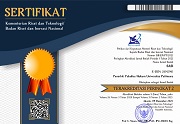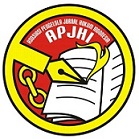Measuring the State Losses in Corruption Cases at the Village Credit Institutions in Bali
 )
)
(1) Faculty of Law University of Warmadewa, Denpasar, Indonesia
 Corresponding Author
Corresponding Author
Abstract
Introduction: Until the end of 2021, the legal issue having been an actual trending topic and hot issue which attracts the attention of scholars and researchers, is the phenomenon of the emergence of criminal acts of corruption committed in congregation by the management of the Village Credit Institution in Bali. Generally, the resolution of these cases is carried out in a traditional manner with the spirit of local wisdom and kinship through the Paruman Krama of Traditional Villages to attain an agreement or consensus. The prosecutor’s office, however, enters into this customary realm, then participates in conducting preliminary investigations and investigations. The involvement of prosecutor is only on the basis of a document issued in 1988 regarding the Bali Governor’s Assistance amounting to two million rupiah as the initial capital for the establishment of the Village Credit Institution.
Purposes of the Research: The present study aims at identifying whether or not the results of the regency inspectorate’s audit can be used as a basis for prosecuting suspects in the cases of abuse of Village Credit Institution finance as well as alternative solutions that necessarily need to be taken to resolve the cases.
Methods of the Research: The first problem is examined using the Theory of Penalty and the second one is examined using the Theory of the Welfare State Law. The research method used is a mixed legal research method. Data are presented using a systematic description technique.
Results of the Research: The solution that is expected is this study sheds light on whether or not the results of the regency inspectorate’s audit can be used as a basis for prosecuting suspects in cases of abuse of the Village Credit Institution finance, what factors are the causes of the liquidity crisis and wether the present study results can be applied as an alternative solution that should be taken in resolving cases at the regency level. The target to be achieved in the research is publication on the electronic media Bali TV in the regional seminar on “Menghitung Kerugian Negara dalam Kasus Korupsi Pada Lembaga Perkreditan Desa di Bali”. The expected output from the study is the results will be published in the Sinta I indexed journal.Keywords
DOI
10.47268/sasi.v28i2.837
Published
2022-05-16
How To Cite
@article{SASI837,
author = {I Ketut Widia},
title = {Measuring the State Losses in Corruption Cases at the Village Credit Institutions in Bali},
journal = {SASI},
volume = {28},
number = {2},
year = {2022},
keywords = {Keywords: Village Credit Institution; Finance; Corruption; State Loss; Liquidity},
abstract = {Introduction: Until the end of 2021, the legal issue having been an actual trending topic and hot issue which attracts the attention of scholars and researchers, is the phenomenon of the emergence of criminal acts of corruption committed in congregation by the management of the Village Credit Institution in Bali. Generally, the resolution of these cases is carried out in a traditional manner with the spirit of local wisdom and kinship through the Paruman Krama of Traditional Villages to attain an agreement or consensus. The prosecutor’s office, however, enters into this customary realm, then participates in conducting preliminary investigations and investigations. The involvement of prosecutor is only on the basis of a document issued in 1988 regarding the Bali Governor’s Assistance amounting to two million rupiah as the initial capital for the establishment of the Village Credit Institution. Purposes of the Research: The present study aims at identifying whether or not the results of the regency inspectorate’s audit can be used as a basis for prosecuting suspects in the cases of abuse of Village Credit Institution finance as well as alternative solutions that necessarily need to be taken to resolve the cases. Methods of the Research: The first problem is examined using the Theory of Penalty and the second one is examined using the Theory of the Welfare State Law. The research method used is a mixed legal research method. Data are presented using a systematic description technique. Results of the Research: The solution that is expected is this study sheds light on whether or not the results of the regency inspectorate’s audit can be used as a basis for prosecuting suspects in cases of abuse of the Village Credit Institution finance, what factors are the causes of the liquidity crisis and wether the present study results can be applied as an alternative solution that should be taken in resolving cases at the regency level. The target to be achieved in the research is publication on the electronic media Bali TV in the regional seminar on “Menghitung Kerugian Negara dalam Kasus Korupsi Pada Lembaga Perkreditan Desa di Bali”. The expected output from the study is the results will be published in the Sinta I indexed journal.},
issn = {2614-2961}, pages = {225--233} doi = {10.47268/sasi.v28i2.837},
url = {https://fhukum.unpatti.ac.id/jurnal/sasi/article/view/837}
}
Journal Article
Astuti, Chandra Ayu, and Anis Chariri. “Penentuan Kerugian Keuangan Negara Yang Dilakukan Oleh BPK Dalam Tindak Pidana Korupsi.” Diponegoro Journal of Accounting 4, no. 4 (2015): 1–22.
Burger, Thomas. “Talcott Parsons, the Problem of Order in Society, and the Program of an Analytical Sociology.” American Journal of Sociology 83, no. 2 (1977): 230–39.
Iswara, I Made Agus Mahendra, and Ketut Adi Wirawan. “Peran Kejaksaan Dalam Pemberantasan Tindak Pidana Korupsi Desa Di Indonesia.” Kertha Wicaksana 14, no. 1 (2020): 69–76. https://doi.org/https://doi.org/10.22225/kw.14.1.1799.69-76.
Padmawati, Ni Nyoman. “Determinants of Economic Loss of Village Credit Institutions and Their Policies.” Journal of Tourism Economics and Policy 1, no. 2 (2021): 95–101. https://doi.org/https://doi.org/10.38142/jtep.v1i3.149.
Piadnyan, Kadek Bagas, I Nyoman Putu Budiartha, and Desak Gede Dwi Arini. “Kedudukan Hukum Lembaga Perkreditan Desa (LPD) Dalam Sistem Lembaga Keuangan Mikro.” Jurnal Analogi Hukum 2, no. 3 (2020): 378–82. https://doi.org/10.22225/ah.2.3.2505.378-382.
Prahassacitta, Vidya. “The Concept of Extraordinary Crime in Indonesia Legal System: Is the Concept An Effective Criminal Policy?” Humaniora 7, no. 4 (2016): 513–21. https://doi.org/10.21512/humaniora.v7i4.3604.
Putra, A A Kt Yoga, and I Made Sarjana. “Keberadaan Lembaga Perkreditan Desa Di Bali Dalam Perspektif Undang-Undang Nomor 1 Tahun 2013 Tentang Lembaga Keuangan Mikro.” Kertha Semaya 6, no. 6 (2018): 1–13.
Putri, Luh Putu Yeyen Karista, and Eric Gordon Withnall. “Protecting the Village Credit Institution: Should Traditional Communities Adopt Modern Financial Management Practices?” Udayana Journal of Law and Culture 2, no. 2 (2018): 115–39. https://doi.org/10.24843/ujlc.2018.v02.i02.p01.
Suhariyanto, Budi. “Quo Vadis Perlindungan Hukum Terhadap Korban Melalui Restitusi (Perspektif Filsafat, Teori, Norma Dan Praktek Penerapannya).” Jurnal Hukum Dan Peradilan 2, no. 1 (2013): 1–22. https://doi.org/http://dx.doi.org/10.25216/jhp.2.1.2013.109-130.
Suwitra, I Made, I Wayan Arthanaya, I Wayan Subawa, and Ni Putu Sawitri Nandari. “Lembaga Perkreditan Desa (Village Credit Institusion) as Non-Banking Financial Institution Based Customary Law in Bali.” Tadulako Law Review (Talrev) 2, no. 1 (2020): 1–15.
Wahyuningsih, Sri Endah, and Agus Sunaryo. “The Role of Prosecutor Office in the Eradication of Corruption Criminal Acts in Indonesia.” Jurnal Pembaharuan Hukum 4, no. 2 (2017): 244–54. https://doi.org/10.26532/jph.v4i2.1701.
Yuliastina, Mellani, Muhammad Hudaya, Wahyudin Nor, and Basyirah Ainun. “New Remuneration System for Village Government Apparatus (APD): Can It Halt Fraud Incident(S)?” Journal of Accounting and Investment 22, no. 1 (2021): 1–22. https://doi.org/10.18196/jai.v22i1.8936.
Book
Jamin, Mohammad. Peradilan Adat: Pergeseran Politik Hukum, Perspektif Undang-Undang Otonomi Khusus Papua. Yogyakarta: Graha Ilmu, 2014.
Poetra, Rizal Akbar Maya. Quo Vadis Masyarakat Hukum Adat Pasca UU Cipta Kerja. Yogyakarta: Nas Media Pustaka, 2021.
Widia, Ketut. Cara Mudah Memahami Desa Adat Di Bali. Badung: CV. Putra Mas Mesari, 2021.
Thesis, Web Page, and Others
Raydika, I Gede Zulvan. “Kedudukan Hukum Dan Kinerja Lembaga Perkreditan Desa (LPD) Pakraman Di Bali Dalam Sistem Lembaga Keuangan Mikro Menurut Undang-Undang Nomor 7 Tahun 1992 Tentang Perbankan (Studi Di LPD Desa Pakraman Kedonganan, Kabupaten Badung).” Universitas Brawijaya, 2013.
| Dublin Core | PKP Metadata Items | Metadata for this Document | |
| 1. | Title | Title of document | Measuring the State Losses in Corruption Cases at the Village Credit Institutions in Bali |
| 2. | Creator | Author's name, affiliation, country | I Ketut Widia; Faculty of Law University of Warmadewa, Denpasar; Indonesia |
| 3. | Subject | Discipline(s) | |
| 3. | Subject | Keyword(s) | Keywords: Village Credit Institution; Finance; Corruption; State Loss; Liquidity |
| 4. | Description | Abstract | Introduction: Until the end of 2021, the legal issue having been an actual trending topic and hot issue which attracts the attention of scholars and researchers, is the phenomenon of the emergence of criminal acts of corruption committed in congregation by the management of the Village Credit Institution in Bali. Generally, the resolution of these cases is carried out in a traditional manner with the spirit of local wisdom and kinship through the Paruman Krama of Traditional Villages to attain an agreement or consensus. The prosecutor’s office, however, enters into this customary realm, then participates in conducting preliminary investigations and investigations. The involvement of prosecutor is only on the basis of a document issued in 1988 regarding the Bali Governor’s Assistance amounting to two million rupiah as the initial capital for the establishment of the Village Credit Institution. Purposes of the Research: The present study aims at identifying whether or not the results of the regency inspectorate’s audit can be used as a basis for prosecuting suspects in the cases of abuse of Village Credit Institution finance as well as alternative solutions that necessarily need to be taken to resolve the cases. Methods of the Research: The first problem is examined using the Theory of Penalty and the second one is examined using the Theory of the Welfare State Law. The research method used is a mixed legal research method. Data are presented using a systematic description technique. Results of the Research: The solution that is expected is this study sheds light on whether or not the results of the regency inspectorate’s audit can be used as a basis for prosecuting suspects in cases of abuse of the Village Credit Institution finance, what factors are the causes of the liquidity crisis and wether the present study results can be applied as an alternative solution that should be taken in resolving cases at the regency level. The target to be achieved in the research is publication on the electronic media Bali TV in the regional seminar on “Menghitung Kerugian Negara dalam Kasus Korupsi Pada Lembaga Perkreditan Desa di Bali”. The expected output from the study is the results will be published in the Sinta I indexed journal. |
| 5. | Publisher | Organizing agency, location | Faculty of Law, Universitas Pattimura |
| 6. | Contributor | Sponsor(s) | Faculty of Law, Universitas Warmadewa |
| 7. | Date | (YYYY-MM-DD) | 2022-05-16 |
| 8. | Type | Status & genre | Peer-reviewed Article |
| 8. | Type | Type | |
| 9. | Format | File format | |
| 10. | Identifier | Uniform Resource Identifier | https://fhukum.unpatti.ac.id/jurnal/sasi/article/view/837 |
| 10. | Identifier | Digital Object Identifier | 10.47268/sasi.v28i2.837 |
| 11. | Source | Title; vol., no. (year) | SASI; Volume 28 Issue 2, June 2022 |
| 12. | Language | English=en | en |
| 13. | Relation | Supp. Files | |
| 14. | Coverage | Geo-spatial location, chronological period, research sample (gender, age, etc.) | |
| 15. | Rights | Copyright and permissions | Copyright: Authors who publish their manuscripts in this Journal agree to the following conditions: 1. The copyright in each article belongs to the author, as well as the right to patent. 2. Authors can enter into separate, additional contractual arrangements for the non-exclusive distribution of the journal's published version of the work (e.g., post it to an institutional repository or publish it in a book), with an acknowledgment of its initial publication in this journal. 3. Authors are permitted and encouraged to post their work online (e.g., in institutional repositories or on their website) before and during the submission process, as it can lead to productive exchanges, as well as earlier and greater citation of published work. 4. Authors have the right to self-archiving of the article (Author Self-Archiving Policy)
License: The SASI Journal is disseminated based on the Creative Commons Attribution-NonCommercial 4.0 International license terms. This license allows anyone to copy and redistribute this material in any form or format, compose, modify, and make derivatives of this material for any purpose. You cannot use this material for commercial purposes. You must specify an appropriate name, include a link to the license, and certify that any changes have been made. You can do this in a way that is appropriate but does not imply that the licensor supports you or your use.
|
Copyright (c) 2022 I Ketut Widia

This work is licensed under a Creative Commons Attribution-NonCommercial 4.0 International License.

 : 3029 times
: 3029 times Download : 1473 times
Download : 1473 times
















